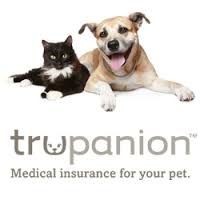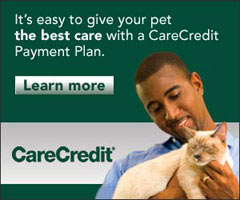; ?>/images/banner.jpg)
The vast majority of veterinarians I have come across in my life – and as a practicing veterinarian for almost 15 years, there are many – are among the most compassionate and kind hearted people I have had the pleasure to know. Since the day we met, my wife has told me that I am generous and honest to a fault, a sentiment that I take far more pride in than I view as a character flaw.
Yet despite most of us having taken on enormous student loan burdens and a rigorous 8 year course of study to achieve a career driven by love and compassion for the innocents we care for, we are often faced with hurtful accusations, such as:
“Money hungry”
“In it for the money”
“All you care about is money”
“You really don’t care about animals”
Etc., etc., etc…
Scroll around this very blog and you will see these and far more sinister sentiments about veterinarians in the comments. Visit internet pet forums, and the vitriol often reaches new lows, hence my decision years ago to avoid them.
So let us set the record straight on the REALITY of the veterinary profession. The most efficiently run and most profitable veterinary practices – which represents a minority of practices since we are not taught business in veterinary school – operate at best at 20% profitability. That means that for every dollar that comes in, 80 cents goes right out in payroll, payroll tax, tangible tax, property tax, regulatory fees, equipment costs, building and maintenance fees, utilities, building insurance, liability insurance, malpractice insurance…I could go on here, but I assume you get my gist. This 20% comes from a calculation known as EBIDTA (Earnings Before Interest, Depreciation, [income] Tax and Amortization). To spare you a business 101 lesson, simply stated, interest on loans, equipment value depreciation, income taxes, and loan principal come out of that 20% profitability number.
So let us offer a common example of how this plays out with a canine patient comes in and requires an emergency splenectomy (surgical removal of the spleen). The pre-anesthetic work-up, anesthesia, surgery, hospitalization, and supportive care barring complications all total about $1800. Naturally, that sum of money sounds like a lot and I should be living in the lap of luxury charging fees like that, right?
Well, no. Of that $1800, 20% (or $1440) goes to pay for all of the above costs I outlined in order to perform stated complete surgical package. This leaves a profit of about $360, of which 30% is lost to interest, depreciation, income tax, and amortization; bringing NET profit to about $252.
Let us suppose that as a practice, we allow clients to carry a balance and pay this down gradually. Since the net profit on the splenectomy is $252, this would be akin to the practice essentially lending a client $1548 of costs that have already gone out the door well before the patient is discharged, that is, assuming that the client will ultimately pay the balance in full.
As bad as veterinarians tend to be at business, we are even worse bankers. I just read a statistic in DVM360 Magazine that only 50% of account receivables (money owed to the practice) on average are ultimately collected by veterinary practices. In the case of my splenectomy example, that would mean that by agreeing to allow that client to carry a balance for the cost of the splenectomy, I have a 50% chance of taking an $1800 loss to my practice.
As a practice owner of which I took on tremendous risk to purchase and have expended an immeasurable amount in passion and work since 2004, I have a responsibility to maintain its health as a business.  This responsibility is not just to protect my life’s passion, but extends to my family, my clients and their pets to offer them the very best medical technology and care, and for my dedicated medical team to have job security with the wages and benefits that they deserve.
This responsibility is not just to protect my life’s passion, but extends to my family, my clients and their pets to offer them the very best medical technology and care, and for my dedicated medical team to have job security with the wages and benefits that they deserve.
 It is important to note that the financial health of a practice need not be mutually exclusive to providing alternative payment structures for pet owners. There is an excellent pet insurance company that covers 90% of veterinary medical fees and reimburses clients within 3 days of claim submission. Many practices offer Care Credit, a third party medical lender that pet owners may apply for that offers low interest payment plans for payment veterinary medical services.
It is important to note that the financial health of a practice need not be mutually exclusive to providing alternative payment structures for pet owners. There is an excellent pet insurance company that covers 90% of veterinary medical fees and reimburses clients within 3 days of claim submission. Many practices offer Care Credit, a third party medical lender that pet owners may apply for that offers low interest payment plans for payment veterinary medical services.
Dr. Roger Welton is the President of Maybeck Animal Hospital in West Melbourne, FL, Chief Editor of the Veterinary Advice and Information Website, Web-DVM, and founder/CEO of Dr. Roger’s Holistic Veterinary Care.

I agree with you and I find it very usually for me. I own three cats and two dogs and all I can say is that I love animals. I would do anything to protect them.
I am a vet too, but I find this very inconvenient. Hope things will change somehow.